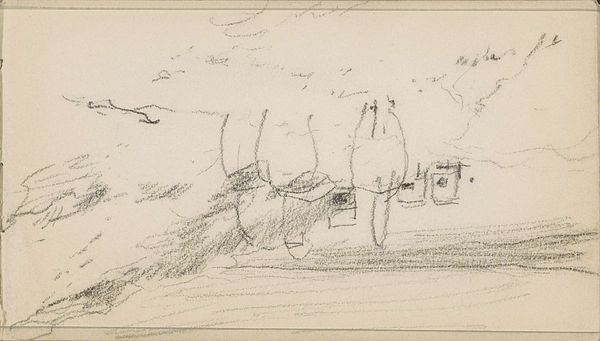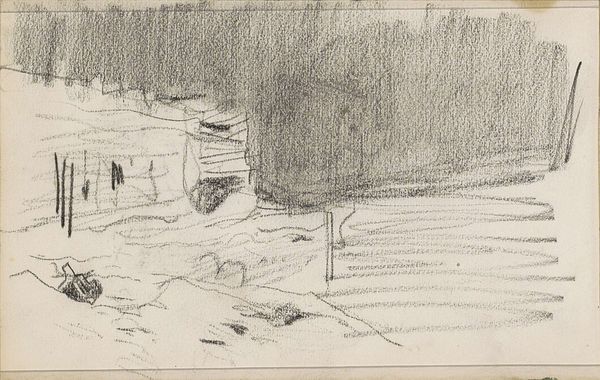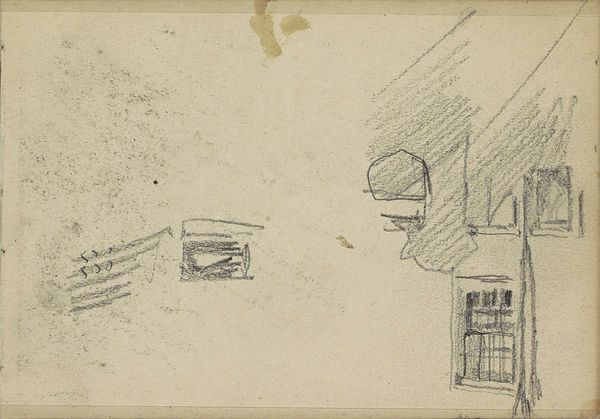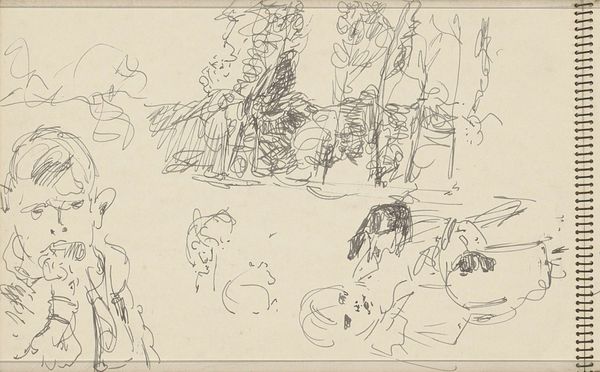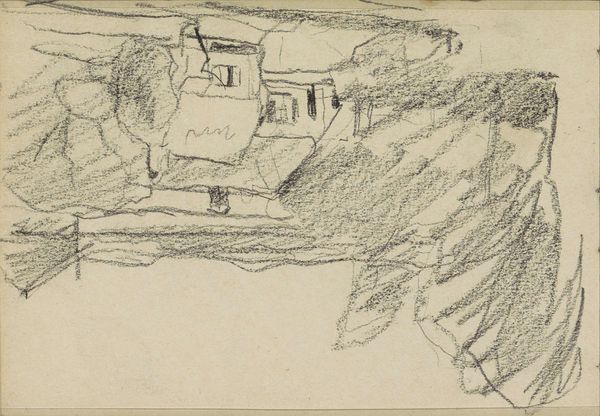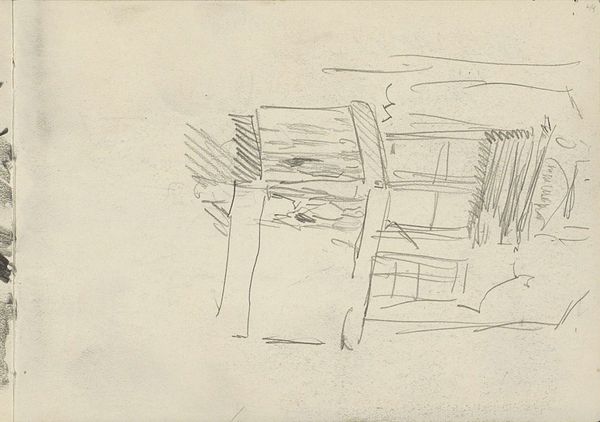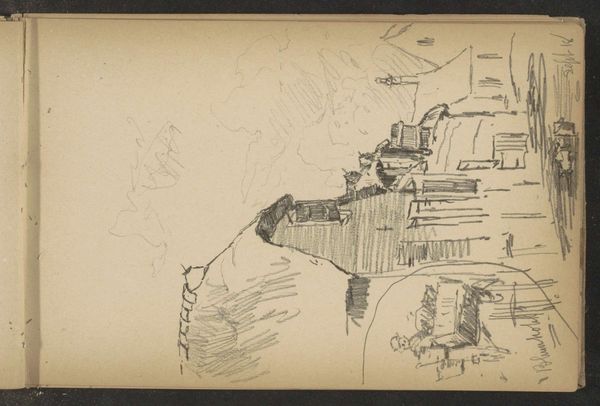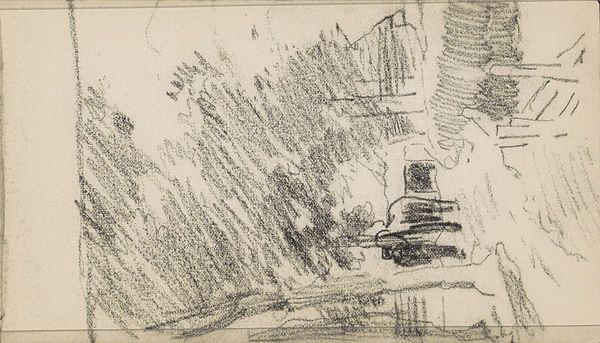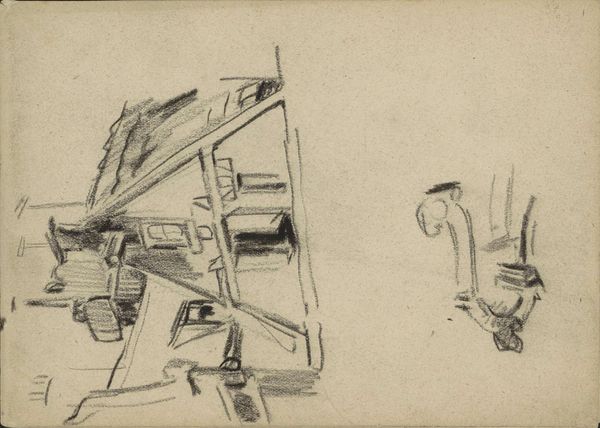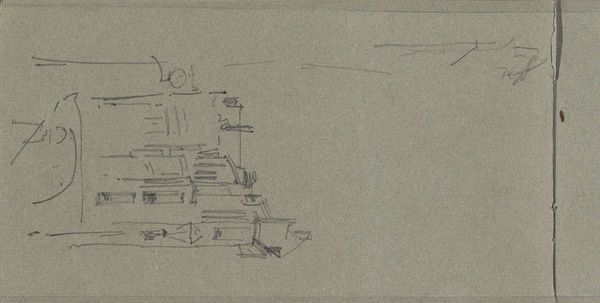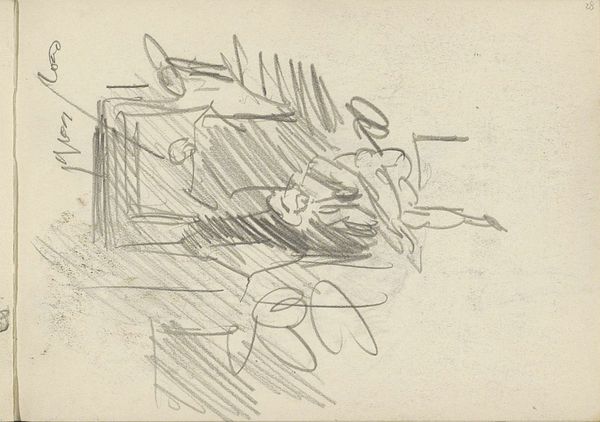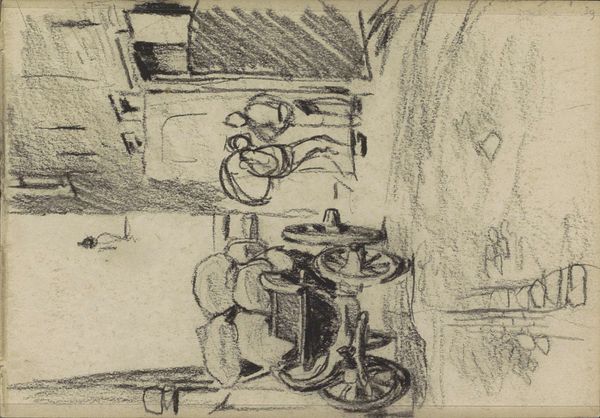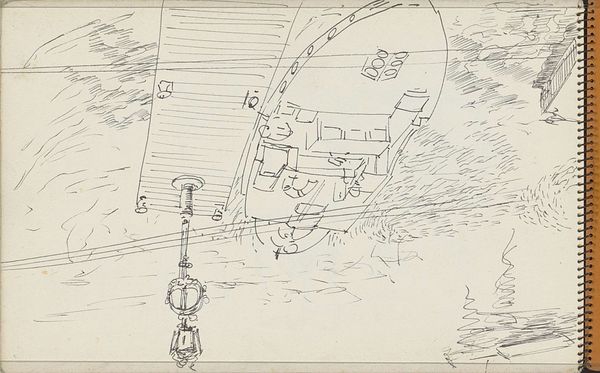
Copyright: Rijks Museum: Open Domain
Curator: Before us, we have Isaac Israels's drawing, "Gezicht op een plein met een ruiterstandbeeld," created circa 1919. It's currently held at the Rijksmuseum. Editor: It has such immediacy, like a fleeting impression. The rough pencil work evokes a kind of pre-industrial city feel. Almost palpable materiality. Curator: Precisely. Notice how Israels uses the pencil to create a sense of depth and atmosphere. The composition, though seemingly simple, guides the eye through the square, leading to the statue. It presents almost a structural framing device, directing our gaze. Editor: Yes, but it’s more than structure. Consider the rapid, almost frantic marks. Israels likely executed this sketch quickly, capturing the immediate environment with an economical use of his materials. You can almost feel the hand moving across the page. Curator: True. The lines, though loose, coalesce into recognizable forms: the buildings, the trees, the equestrian statue, the man. There is also the repetition of geometric shapes which allows an engagement with the fundamental aesthetic elements inherent in form. Editor: And what of the social element implicit within it? This work speaks to the everyday life of the working person. It looks as if this was done in a field, to directly reproduce that reality in the studio space. Curator: An intriguing observation. Do you believe this portrayal can relate to the consumption and experience of public space, such as grand squares, by ordinary people in society at the time? Editor: I think it speaks volumes about the value and dignity inherent in recording life. It's fascinating how he transforms such everyday occurrences into profound humanistic observations through the material act of creation. Curator: Ultimately, the drawing reveals Israels’ keen eye for composition and the poetics within simplicity and formal unity. It stands on its own as an exploration of shapes. Editor: I agree. The drawing also serves as a testament to the importance of sketching in art, the fundamental value of observation, and the transformative possibilities residing in raw material and skilled labour.
Comments
No comments
Be the first to comment and join the conversation on the ultimate creative platform.
